For nearly a quarter of a century beginning around 1915, a strip of Chicago centered on south State Street (from Van Buren Street in the Loop to 39th Street) developed into an historically significant district known as the Black Belt, part of the present-day Bronzeville community. In search of good jobs, decent housing, and basic freedoms, African Americans traveled from the South to points north and west in what is known as the Great Migration. According to the City of Chicago, the city’s African-American population grew nearly 150 percent from 1910 to 1920, reaching a population of 110,000 by 1920. The Black Belt became a largely self-sufficient and thriving area.
During its zenith in the 1920s, the area on and east of present-day IIT Main Campus was a city in miniature, sustained by successful businesses, entrepreneurship, political leadership, and cultural creativity. Although migration from the South continued until around 1970, the original Black Belt began to decline in the early 1930s under the impact of the Great Depression. Additionally, the striking down of racially restrictive covenants by the United States Supreme Court in 1948 provided opportunities for upwardly mobile residents of Bronzeville to move beyond its historic boundaries.
Today’s Bronzeville (whose southern border extended over the years to 47th Street) remains a hub of African-American life. Community organizations and the City of Chicago have been working to revitalize the area through rehab projects, mixed-use development, and new business ventures.
In 1998 the City of Chicago accorded Chicago Landmark status to nine Bronzeville structures: Unity Hall, the Chicago Defender Building, Sunset Café, the Eighth Regiment Armory, the Liberty Life/Supreme Life Building, Victory Monument, the Overton Hygienic Building, the Chicago Bee Building, and the Wabash Avenue YMCA. For more information about these landmark structures, click here. Additionally, in 1994, the city accorded Chicago Landmark status to the South Side Community Art Center.
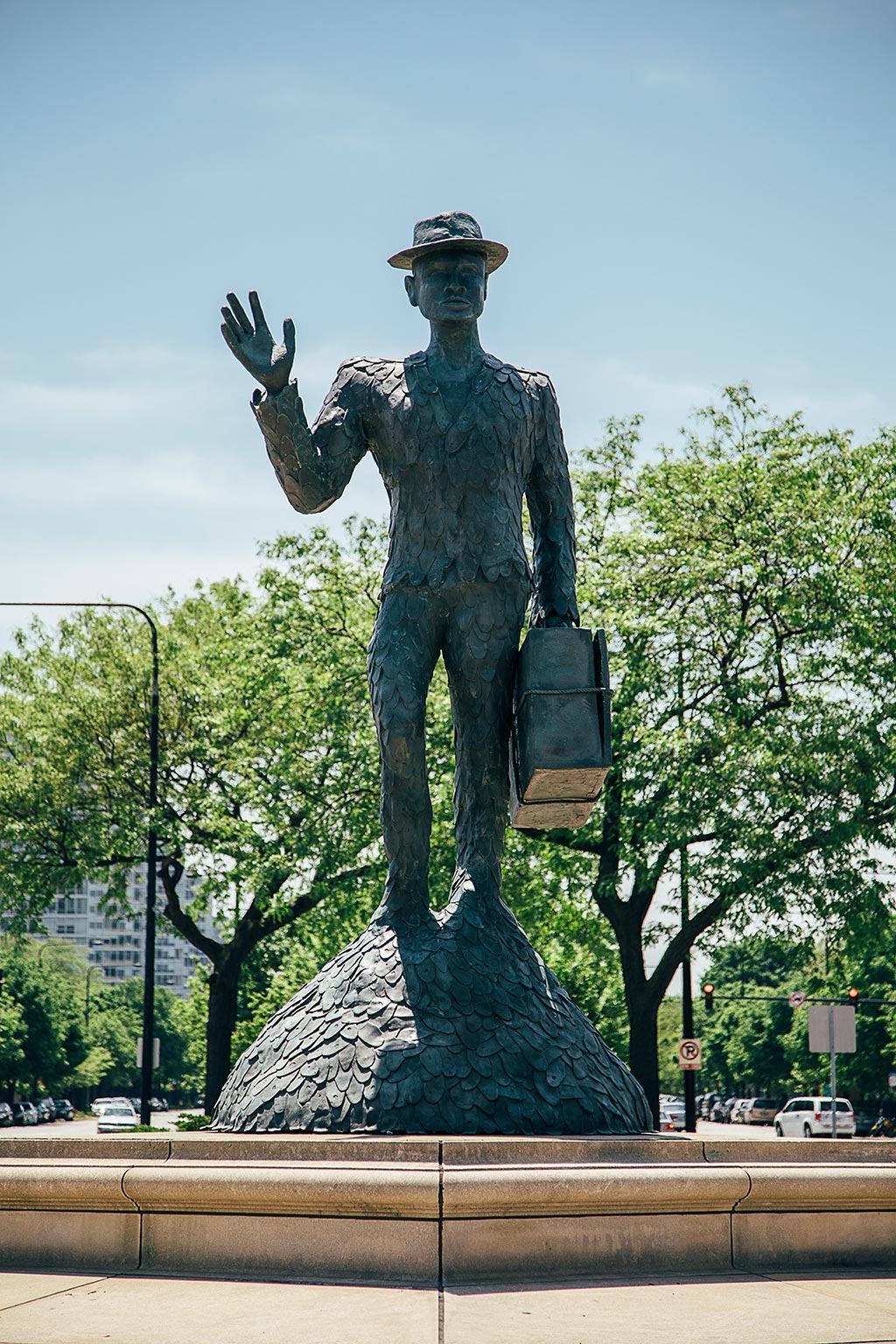
Monument to the Great Northern Migration
As part of the Chicago Public Art Program, sculptor Alison Saar was commissioned to create the Monument to the Great Northern Migration in commemoration of the African-American men and women who traveled from the South to Chicago after the Civil War. The bronze figure waves a hand in welcome and stands atop a mound of worn shoe soles signifying the often arduous journey to the North.
Photo: Scott Benbrook
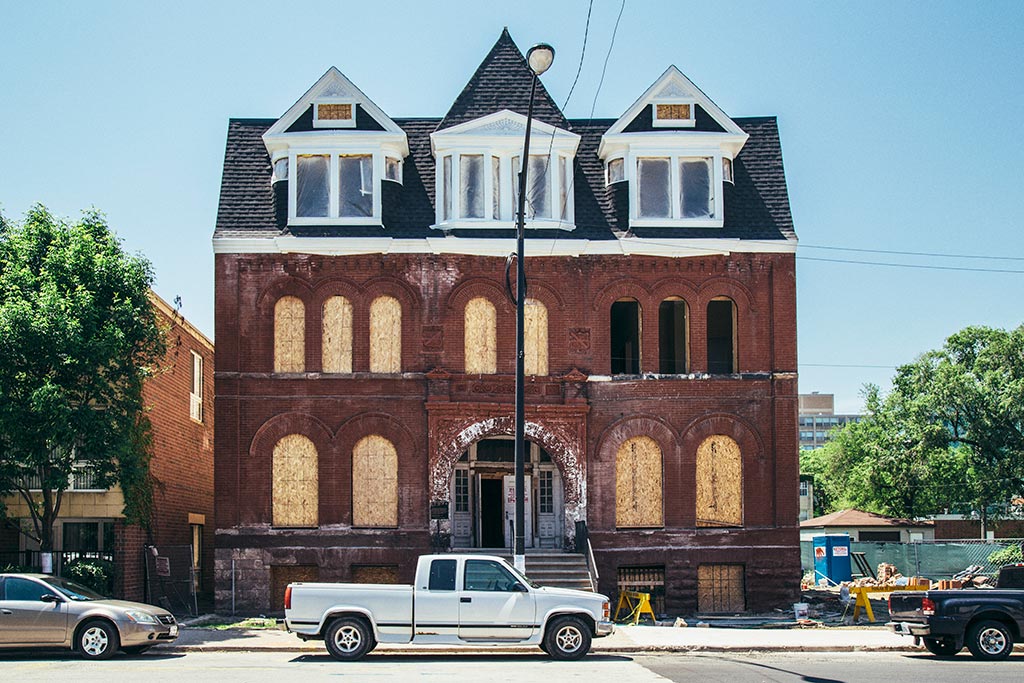
Unity Hall (3140 South Indiana Avenue)
Unity Hall served the Jewish community in the late 1800s as the Lakeside Club social organization. For many years beginning in 1917, the building served as a center of African-American political activity headed first by city councilman Oscar DePriest and then by prominent Democratic political leader William Dawson.
Photo: Scott Benbrook
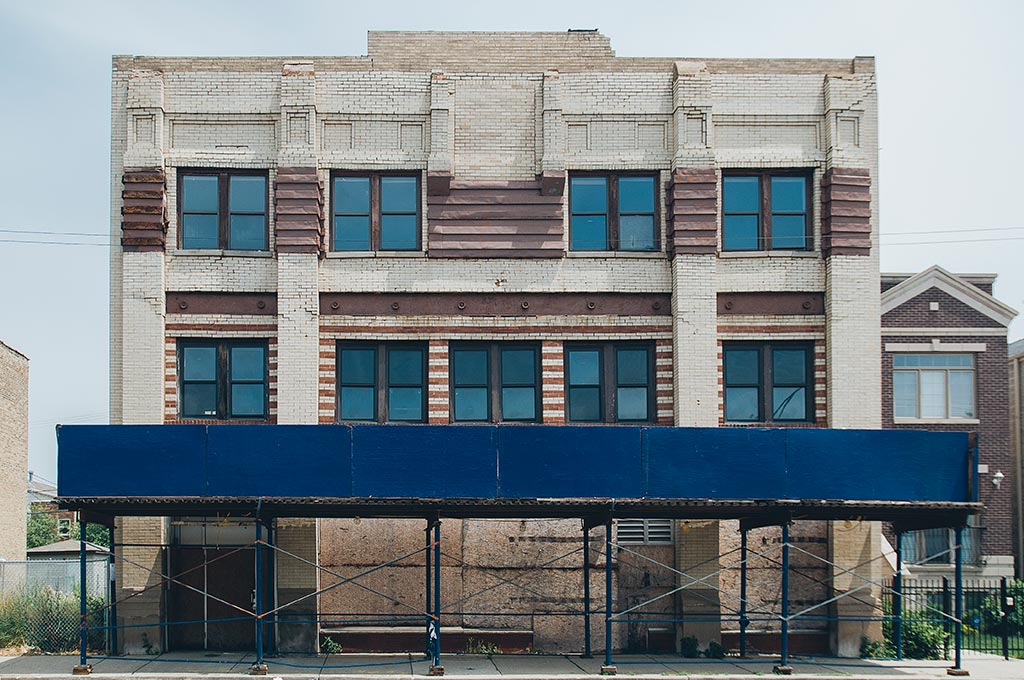
Chicago Defender Building (3435 South Indiana Avenue)
Built in 1899 as a Jewish synagogue, the Chicago Defender Building housed the Chicago Defender newspaper from 1920–1960. Founded in 1947, the Defender is largely credited for helping to empower African Americans in the South to move to the North for a life of new opportunities.
Photo: Bonnie Robinson
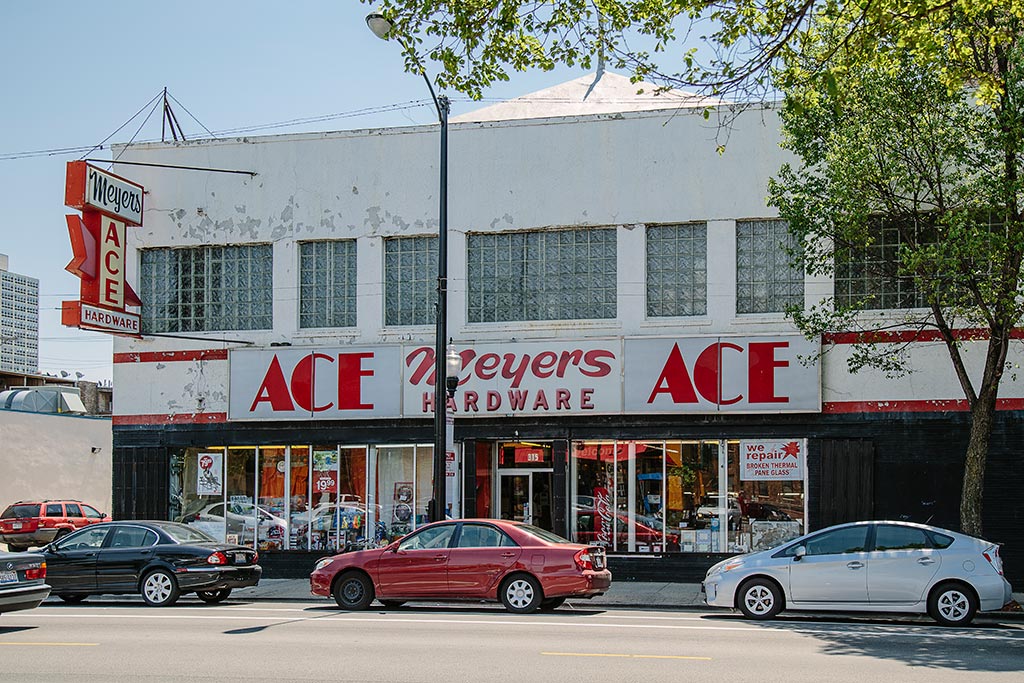
Sunset Café (315 East 35th Street)
Now housing Meyers Ace Hardware, the Sunset Café building was a nightclub in the 1920s and ’30s that confirmed Chicago’s reputation as a jazz mecca. Trumpeter Louis Armstrong and pianist Earl “Fatha” Hines often accompanied the café’s house orchestra, while music legends Benny Goodman, Gene Krupa, Bix Beiderbecke, and Jimmy Dorsey joined in on nightly jam sessions.
Photo: Scott Benbrook
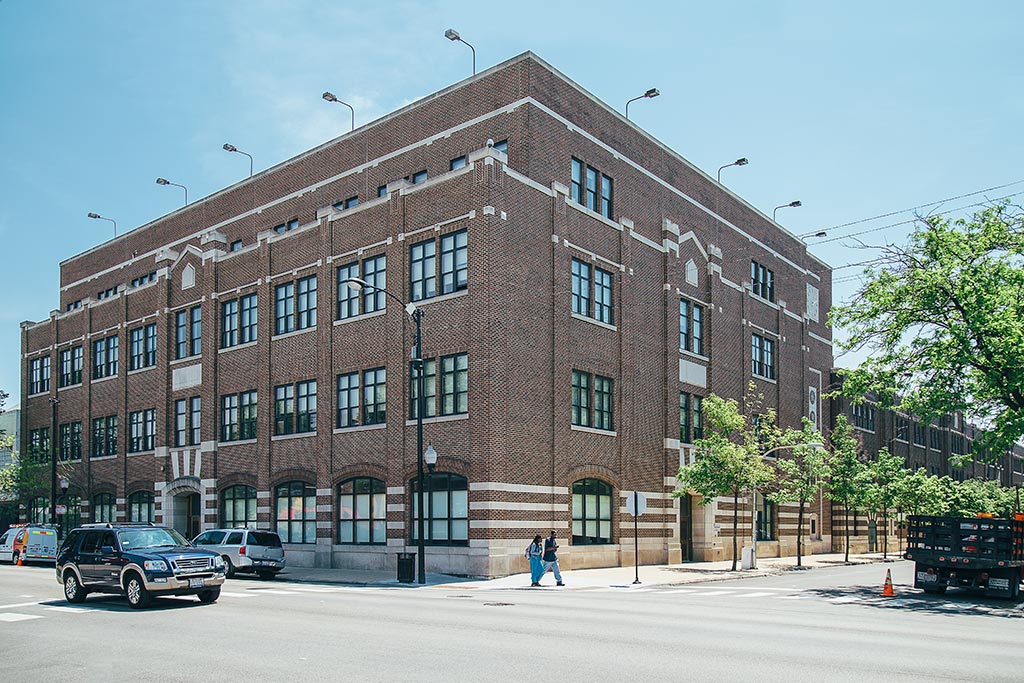
Eighth Regiment Armory (3533 South Giles Avenue)
This structure was built in 1914–15 to serve the “Fighting 8th,” an African-American volunteer military regiment. During World War I, the Eighth Regiment was incorporated into the 370th United States Infantry. The former armory is now the home of the Chicago Military Academy–Bronzeville, a public high school.
Photo: Scott Benbrook
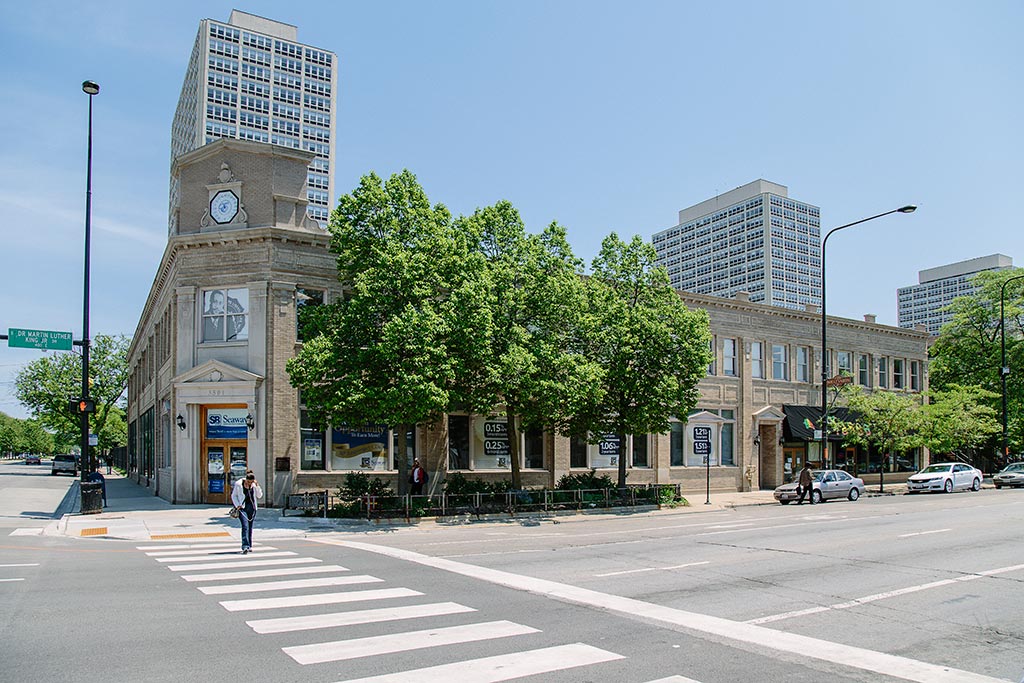
Liberty Life/Supreme Life Building (3501 South Martin Luther King Jr. Drive)
The Bronzeville Visitor Information Center now occupies a portion of this building, which served as the headquarters of the first African-American owned and operated insurance company in the northern United States. Liberty Life Insurance Co. was incorporated in 1919 and set up offices in the building; through a merger a decade later, it grew into the Supreme Life Insurance Company of America and remained in business until 1992.
Photo: Scott Benbrook
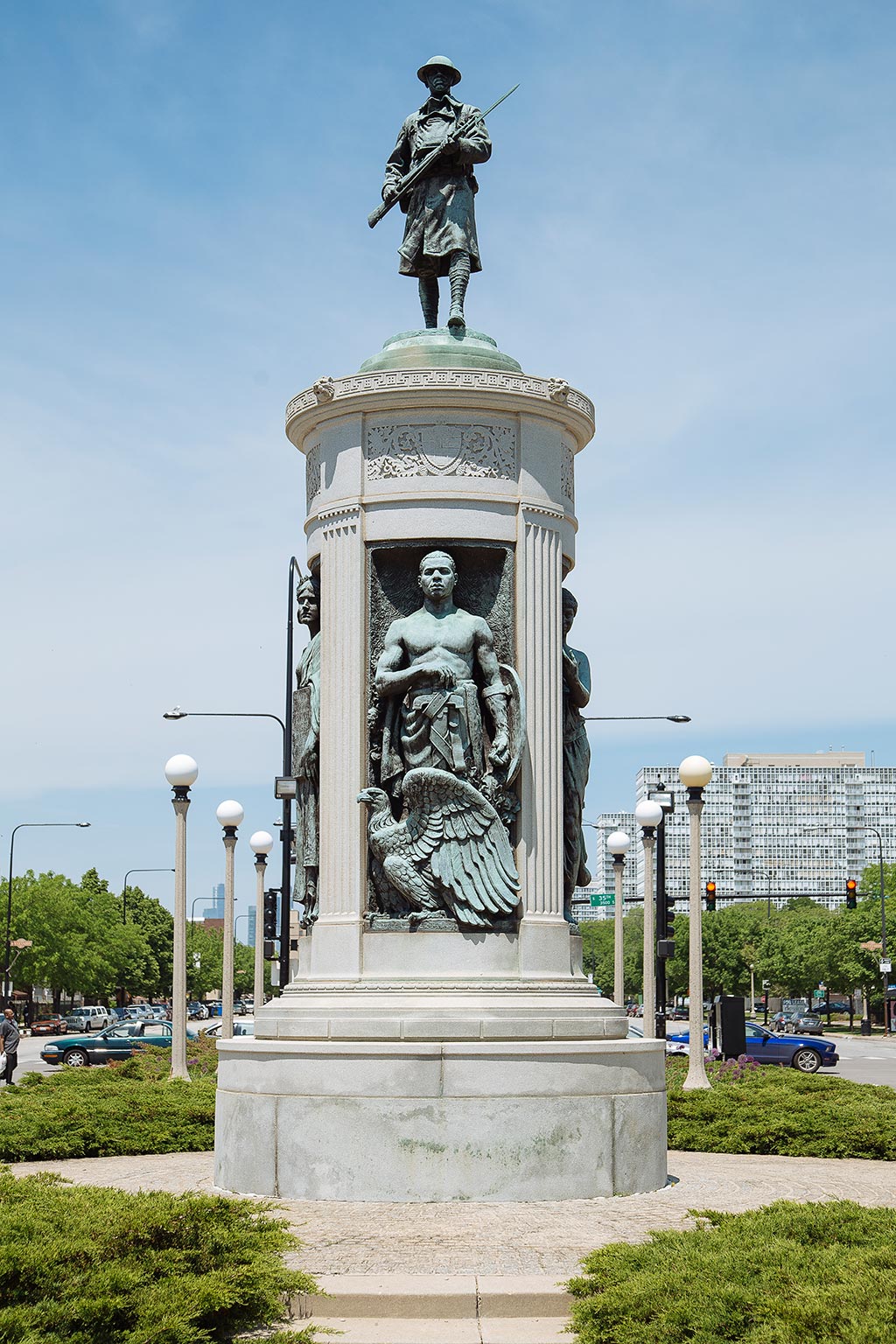
Victory Monument (35th Street and South Martin Luther King Jr. Drive)
Composed of three sculpted bronze panels on a granite shaft, the Victory Monument was dedicated on Armistice Day 1928. It honors the triumphs of the Eighth Regiment when members served in France during World War I as part of the Illinois National Guard unit of the 370th United States Infantry.
Photo: Scott Benbrook
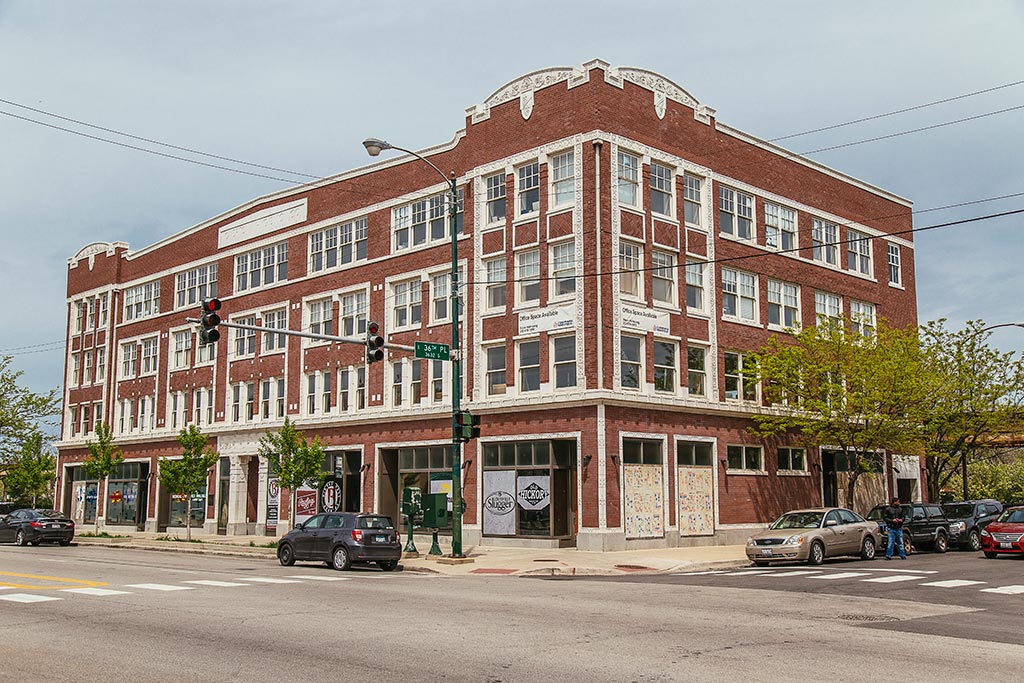
Overton Hygienic Building (3619–27 South State Street)
Built in 1922–23, this Chicago Landmark is named for African-American entrepreneur Anthony Overton, who commissioned the structure to house the headquarters of his cosmetics company. Several other prominent businesses were located here, including Douglass National Bank, the first nationally chartered, African-American owned bank.
Photo: Scott Benbrook
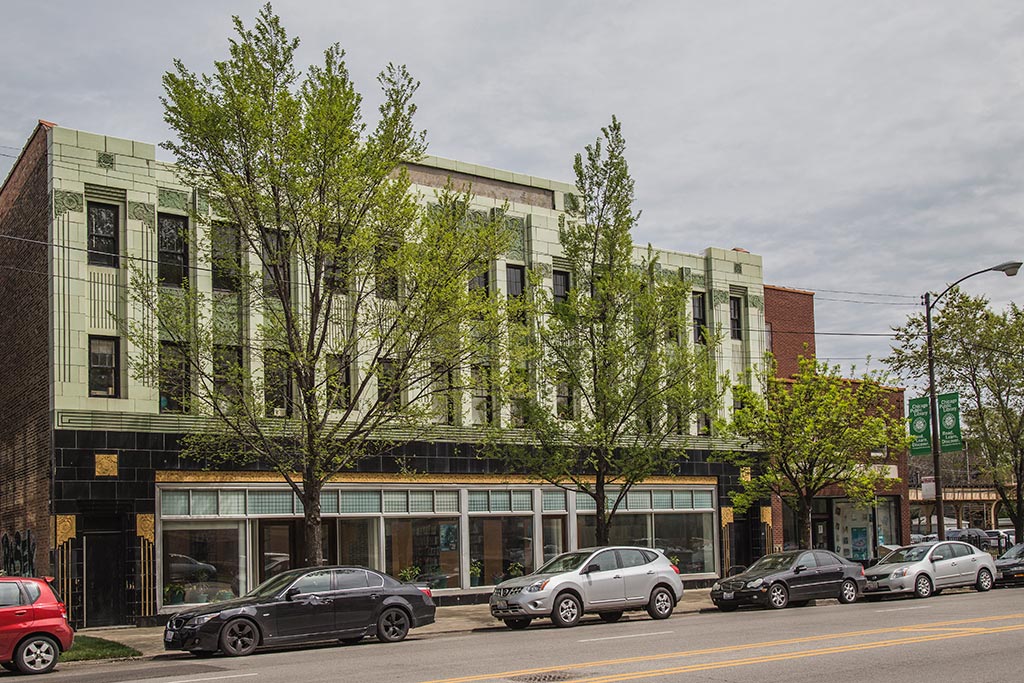
Chicago Bee Building (3647–3655 South State Street)
The only area building featuring the Art Deco architectural style, the Chicago Bee Building housed the Chicago Bee, a newspaper Anthony Overton founded in 1926 to promote African-American businesses and issues. Today, the building operates a branch of the Chicago Public Library.
Photo: Scott Benbrook
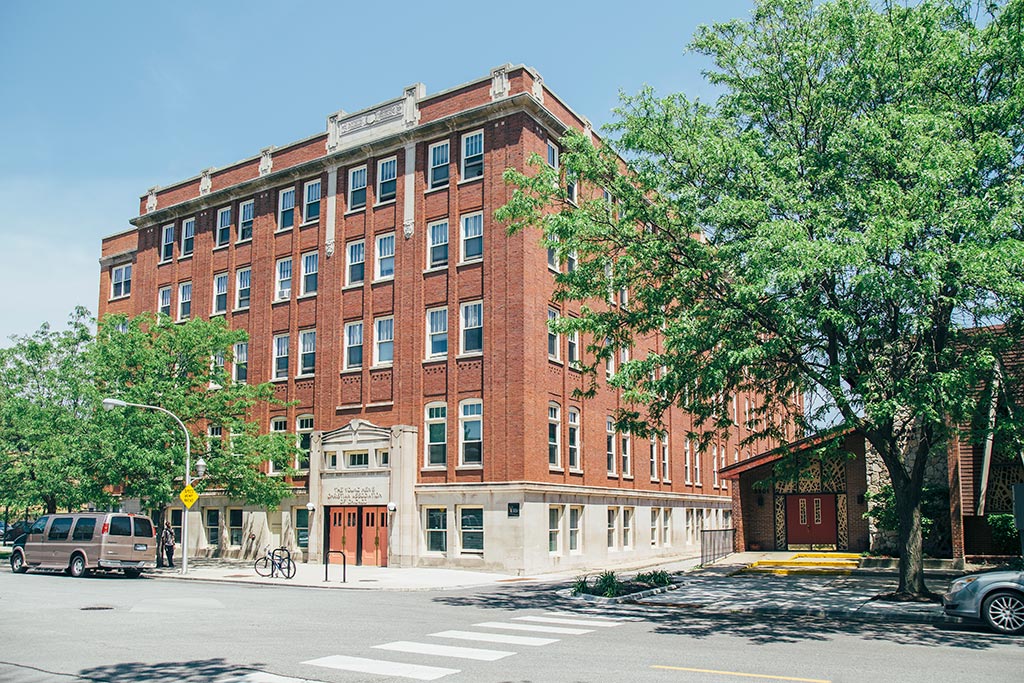
Wabash Avenue YMCA (3763 South Wabash Avenue)
Opened to the public in 1913, the Wabash Avenue Young Men’s Christian Association assisted the influx of African Americans from the South in many ways. Besides providing recreational activities, the YMCA assisted arrivals in finding jobs and housing. It continues to serve the Bronzeville community today.
Photo: Scott Benbrook

South Side Community Art Center (3831 South Michigan Avenue)
Founded in 1940, the South Side Community Art Center is the oldest African-American art center in the United States. The mission of the SSCAC is to preserve, conserve, and promote the legacy and future of African-American art and artists while educating the community on the value of art and culture.
Photo: Scott Benbrook